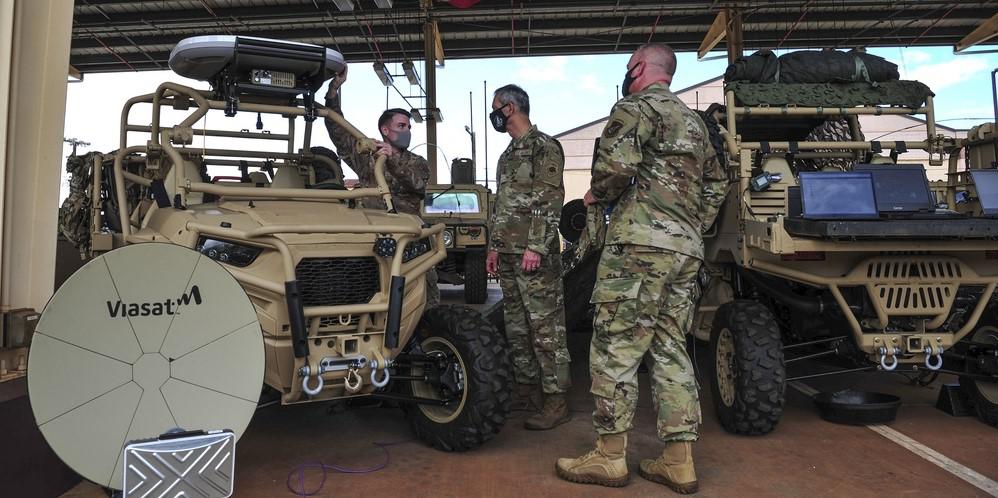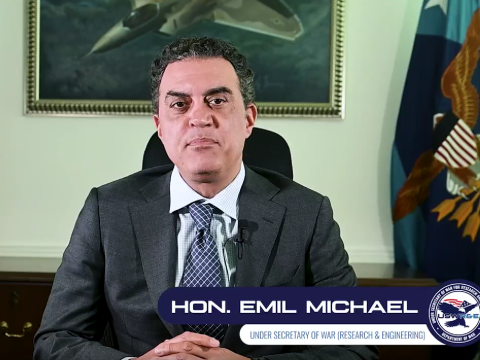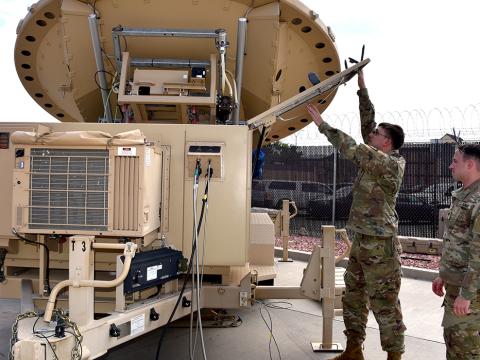Military SATCOM Cannot Support Joint All-Domain Warfighting
The U.S. military’s existing satellite communications network, built to serve legacy systems, cannot appropriately enable warfare in the information age. To enable joint all-domain command and control, or JADC2, the U.S. Space Force needs to proliferate low-earth- and mid-earth-orbit, LEO and MEO, satellite constellations. In addition, the service needs to leverage space-based optical communications to reach the full potential of proliferated satellite communication networks.
These are the stipulations of the Mitchell Institute for Aerospace Studies' Gen. Kevin Chilton, USAF (Ret.), explorer chair for Space Warfighting Studies, and Lukas Autenried, senior analyst, Mitchell Institute Spacepower Advantage Research Center, in their new report, The Backbone of JADC2: Satellite Communications for Information Age Warfare.
The authors posit that the United States’ military satellite communications, or MILSATCOM, which mostly resides in geosynchronous earth orbit (GEO), is significantly vulnerable to Chinese and Russian counterspace capabilities, offers insufficient bandwidth, has considerable latency and a lack of interoperability.
“China and Russia have the capabilities to target every aspect of U.S. space-based assets,” said Autenried. “China has a plan to be able to attack every aspect: links, satellites, ground stations, etc. And they have actually made information superiority their number one priority.”
The current MILSATCOM was developed by separate services over the years. It was not designed from an enterprise-wide perspective. The current system is not optimized to support JADC2, for warfighters to share information in real-time across all domains and thousands of targets, Autenried purports. Moreover, the legacy MILSATCOM capability supports a data structure that suffers from over-classification.
“Overclassification is another major issue,” he said. “And that is both in terms of program information, where you have acquisition people who may not be aware of another office that is handling a similar problem, and then its mission data too. To be able to access information, sometimes it is so heavily classified that even people who may have all of the requisite clearances can’t get access, particularly partners and allies.”
In addition to the Space Force proliferating, distributing, disaggregating and diversifying its SATCOM options by deploying non-GEO satellite constellations, the officials recommended that the service examine new models for acquiring commercial SATCOM services—especially space-based laser communications.
“The linchpin to realizing the full potential of these SATCOM constellations is to leverage space-based optical communications,” the report stated. “The Space Force should therefore aggressively develop and deploy optical inter-satellite links as well as conduct rapid experimentation and demonstrate optical terminals on airborne and terrestrial systems. To realize advancements in the space domain requires corresponding investment in the terrestrial infrastructure necessary to support it, including flexible terminals and enterprise management and control capabilities. Building these capabilities in sufficient quantities will require the Space Force to incentivize cost reduction and manufacturability more in its contracting.”
And while the two-year old Space Force is or shortly will be the holder of the highly fragmented U.S. MILSATCOM, the service was designed to be a lean force and simply does not have enough funding or personnel to take the capabilities to where they need to be for information warfare.
“This is the right opportunity to do this, to consolidate all the data to the different capabilities and hopefully it is all within the Space Force,” said Maj. Gen. Larry Stutzriem, USAF (Ret.), director of research, Mitchell Institute. “And they are really trying to keep the Space Force a bare bones organization. But they just don’t have enough people or resources to do what they are being asked to do. I think they are doing the best that they can but really they should get more resources.”
Indeed, the Space Force only accounts for 2.5 percent of the Defense Department’s budget, the officials noted. But if 97.5 percent of DoD depends on space and the Space Force for their operations, that is a problem.
“The Space Force is really trying to live within its means,” Gen. Chilton added. “The problem is that the requirements and the demand, Congress needs to increase their budget. Same with the Air Force and the demand for air power. It is going one way, up, and the budget is flat.”
In addition, the authors stressed that the service’s new Space Warfighting Analysis Center and its acquisition organizations “must be sufficiently funded” to perform any necessary analysis.





Comments